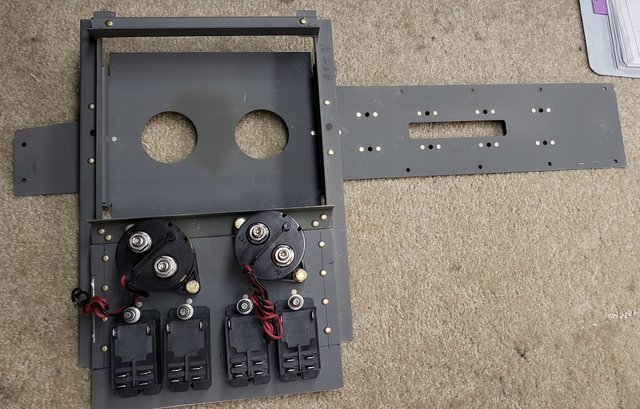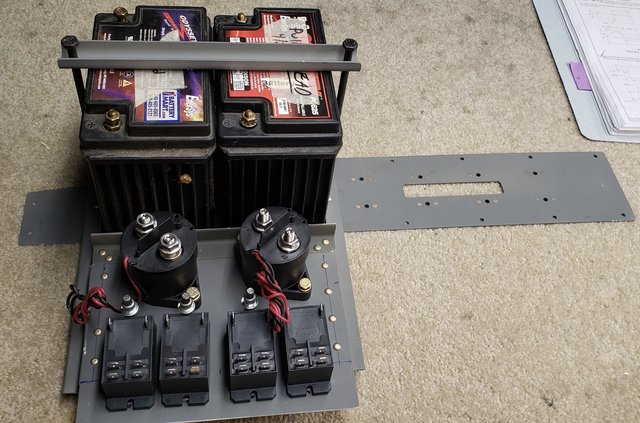Carl Froehlich
Well Known Member
Just finished modifying the new RV-10 project battery tray to hold two PC-625 batteries (same as I did on the first RV-10).
Not hard, just need to make the U shape tray flat, add some 0.063” channel and a piece of 0.063” plate to hold the two Master solenoids and four 30 amp relays that feed both primary and alternate power to Avionics #1 and Avionics #2.
Carl


Not hard, just need to make the U shape tray flat, add some 0.063” channel and a piece of 0.063” plate to hold the two Master solenoids and four 30 amp relays that feed both primary and alternate power to Avionics #1 and Avionics #2.
Carl






